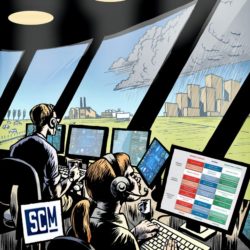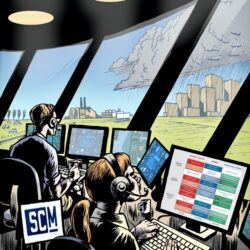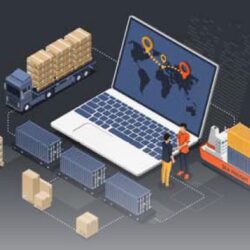Framework for end-to-end supply chain visibility

Rapid changes in demand and growing suppliers’ risks have made end-to-end supply chain visibility crucial for companies nowadays. To gain a clearer understanding of this concept, it is necessary to distinguish between strategic, tactical and operational visibility and between the long-term and short-term horizon. Supply Chain Media has developed this practical matrix containing specific functionality details for the associated information systems.
By Martijn Lofvers
Companies continue to find supply chain visibility hugely challenging. Only 6% of businesses believe that they have end-to-end supply chain visibility – i.e. an overview of the whole chain – according to a global study conducted by logistics service provider Geodis in 2017. 70% of those surveyed describe their supply chain as very complex or extremely complex, which explains why companies feel they lack end-to-end visibility.
Research and advisory company Gartner regards visibility as one of the key focus areas in its annual study of supply chain needs and systems. With a score of 23%, a lack of end-to-end supply chain visibility ranks as one of the three most important obstacles to achieving the business objectives. The biggest obstacle, with 38%, is forecast reliability and demand variability. According to Gartner’s findings, 24% of companies have already implemented visibility and 46% are in the process of doing so; 70% say they will invest more in specific applications for this purpose in 2018.
The availability of supply chain visibility functionality scores notably higher than the 6% from the Geodis study. The reason for the difference seems to lie in how visibility is defined. Gartner’s research uses the terms ‘traceability’ (of goods) and ‘event management’ in addition to ‘visibility’. True end-to-end supply chain visibility provides a complete overview of the whole chain, from raw materials right through to usage by the end customer.
Three focus areas
End-to-end supply chain visibility can be divided into three focus areas. The first relates to the upstream supply chain, towards suppliers. Companies often source materials and components worldwide and are increasingly outsourcing production too. This is creating complex supplier networks. Most companies usually know their direct suppliers personally but rarely know their suppliers’ suppliers. Two key elements of upstream supply chain visibility are suppliers’ risks and compliance issues. At tactical level, the total landed costs of inbound goods are of crucial importance. At operational level, it is essential to have visibility of inbound materials, components and products. … … …
 Want to read more?
Want to read more?
Subscribe on iPad or Android tablet to read the full version >>
or
Subscribe on print to receive the next issue >>
This article was first published in Supply Chain Movement 31 | Q4 – 2018










